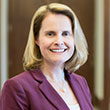So Much for That Merit Raise: The Link between Wages and Appearance
In a recent book, journalist Malcolm Gladwell reported the results of his survey of about one-half of the CEOs of Fortune 500 companies. He found that the average CEO is approximately 3 inches taller than the average American man, who stands 5-foot-9. Further, 30 percent of the CEOs are at least 6-foot-2; the corresponding percentage for American adult men overall is only 3.9 percent. To what can these observations be attributed? Do taller people make better CEO candidates? In general, workers expect their employment outcomes, especially wages and promotions, to depend on factors related to productivity, such as education, tenure and experience. However, this type of anecdotal evidence about the heights of CEOs suggests that employment outcomes are influenced by more than just productivity.
In past articles of this publication, various authors have explored the effect of several seemingly innocuous factors (for example, gender and marital status) that might bias wages. In this article, we examine a few aspects of appearance-a characteristic that one might not believe would directly affect wages. We first consider some studies that provide evidence of an appearance-wage bias and then discuss some possible explanations for it.
Beauty
A study by economists Daniel Hamermesh and Jeff Biddle uses survey data to examine the impact that appearance has on a person's earnings. In each survey, the interviewer who asked the questions also rated the respondents' physical appearance. Respondents were classified into one of the following groups: below average, average and above average.
Hamermesh and Biddle found that the "plainness penalty" is 9 percent and that the "beauty premium" is 5 percent after controlling for other variables, such as education and experience. In other words, a person with below-average looks tended to earn 9 percent less per hour, and an above-average person tended to earn 5 percent more per hour than an average-looking person. For the median male in 1996 working full-time, the respective penalty and premium amounted to approximately $2,600 and $1,400 annually. The corresponding penalty and premium for the median female worker are $2,000 and $1,100.1
One might think that for certain professions, appearance is more important. Indeed, occupations that require more interpersonal contact have higher percentages of above-average-looking employees. However, Hamermesh and Biddle showed that the plainness penalty and the beauty premium exist across all occupations.
In a separate paper, Biddle and Hamermesh investigated the influence of beauty on the wages of lawyers, using data collected from the same law school for graduating classes of 1971-78 and 1981-88. The school has photographs of each entering class, which form the basis of the study. A different panel of four observers-including one person younger than 35 and one at least 35 years old from each gender-rated the students in each class on a scale of 1 to 5, where a "5" represents the most attractive. Biddle and Hamermesh took the average of the four ratings to get an individual's overall rating. To correct for differences among panelists, the ratings for each class were standardized.
They found evidence of a beauty premium for attorneys that increases with age, at least for the 1971-78 classes.2 Five years after graduating, a male lawyer from these classes with a beauty rating of one rank above average had approximately 10 percent higher earnings than his counterpart with a rating of one rank below average. Fifteen years after graduation, the beauty premium increased to 12 percent. The beauty premium was smaller for the 1980s classes and might be attributed to tighter labor market conditions at the time of graduation.
Differences in the beauty premium were found also between lawyers in the private sector and those in the public sector. Fifteen years after graduating, the beauty premium for private lawyers was three times that for public lawyers.
Weight
Economists Susan Averett and Sanders Korenman studied the effects of obesity on wages, using a sample consisting of individuals aged 16-24 in 1981 who were 23-31 in 1988. They showed that women who were obese according to their Body Mass Index (BMI) in both 1981 and 1988 earned 17 percent lower wages on average than women within their recommended BMI range. However, women who became obese between those two survey years earned only slightly less than women of recommended BMI. When comparing by race, the authors found a wage penalty for obesity among white women but no significant penalty for black women. Among white men, they found a much lower wage penalty for obesity than for their white female counterparts. A small positive relationship was actually found between obese black men and wages.
In a similar study, economist John Cawley found that the only group for which weight consistently lowered wages is white females.3 His results show that for a typical white woman weighing 64 pounds more than an otherwise-similar white female of average weight, the former's wage will be about 9 percent lower.
Height
Economists Nicola Persico, Andrew Postlewaite and Dan Silverman tried to explain the origin of the "height premium." They focused on white men to avoid possible discrimination based on gender or race. After controlling for a number of family characteristics that are generally correlated with both height and wages (parents' education, parents' occupation and number of siblings), they found that for white men in the United States, a 1.8-percent increase in wages accompanies every additional inch of height.4 Men's wages as adults can be linked to their height at age 16. For a given adult height, Persico, Postlewaite and Silverman found that increasing height at age 16 by one inch increased adult wages by 2.6 percent, on average. This equates to a nominal increase of approximately $850 in 1996 annual earnings. In other words, for two adult men of the same height, the one who was taller at 16 would most likely earn the higher wage.
Discussion
While appearance might seem unrelated to job performance, some explanations behind these wage differentials are based on unmeasured productivity. Certain characteristics, such as appearance, might affect productivity in ways that are not as easily measured (or as obvious) as are other characteristics, like education or experience. Appearance, for example, can affect confidence and communication, thereby influencing productivity. A study by economists Markus Mobius and Tanya Rosenblat estimates that confidence accounts for approximately 20 percent of the beauty premium. Further, employers might believe that customers or co-workers want to interact with more-attractive people. Biddle and Hamermesh found support for this view based on a higher beauty premium in the private sector since private attorneys need to attract and keep clients.
It is also conceivable that either weight or height can have an effect on unmeasured productivity. In both studies concerning weight, the authors argued that productivity might be negatively correlated with body mass, perhaps because of factors such as health or self-esteem. Persico, Postlewaite and Silverman hypothesized that height increases the chances that teens participate in social activities, such as nonacademic clubs and sports. This participation, in turn, helps them learn skills that are rewarded by employers and might enhance productivity.5
However, researchers have found some evidence difficult to reconcile with unmeasured productivity. Another possible explanation for these wage differences is discrimination. For example, Hamermesh and Biddle found that the beauty premium exists even outside of occupations that require frequent interpersonal contact. Moreover, the wage differential for obesity seems to be limited to white women, belying an unmeasured productivity explanation.
As these results suggest, disentangling the effects of productivity differences and discrimination can be problematic. Though discrimination is a possible explanation, anti-discrimination laws might not guarantee that these wage differentials would evaporate. Unmeasurable productivity might still result in pay disparities, and CEOs might still be tall.
Endnotes
- Figures were calculated from median weekly earnings data from the Bureau of Labor Statistics. [back to text]
- Data on earnings come from the school's follow-up surveys five and 15 years after graduation. [back to text]
- Cawley examined white, black and Hispanic women and men. [back to text]
- They found that compared with men taller than the median height, men shorter than the median were more likely to come from larger families, and their parents were less-educated and less likely to have held skilled or professional jobs. [back to text]
- Some examples they give of skills and attributes one might gain though participation in social activities are interpersonal skills, motivation, self-esteem and self-discipline. [back to text]
References
Averett, Susan and Korenman, Sanders. "The Economic Reality of The Beauty Myth." Journal of Human Resources, Spring 1996, Vol. 31, Issue 2, pp. 304-30.
Biddle, Jeff E. and Hamermesh, Daniel S. "Beauty, Productivity, and Discrimination: Lawyers' Looks and Lucre." Journal of Labor Economics, January 1998, Vol. 16, No. 1, pp. 172-201.
Cawley, John. "The Impact of Obesity on Wages." Journal of Human Resources, Spring 2004, Vol. 39, Issue 2, pp. 451-74.
Gladwell, Malcolm. Blink: The Power of Thinking Without Thinking. New York: Little, Brown & Company, 2005.
Hamermesh, Daniel S. and Biddle, Jeff E. "Beauty and the Labor Market." American Economic Review, December 1994, Vol. 84, Issue 5, pp. 1,174-94.
Mobius, Markus M. and Rosenblat, Tanya S. "Why Beauty Matters." Manuscript, Wesleyan University, August 2004.
Persico, Nicola; Postlewaite, Andrew; and Silverman, Dan. "The Effect of Adolescent Experience on Labor Market Outcomes: The Case of Height." Journal of Political Economy, October 2004, Vol. 112, No. 5, pp. 1,019-53.
Views expressed in Regional Economist are not necessarily those of the St. Louis Fed or Federal Reserve System.
For the latest insights from our economists and other St. Louis Fed experts, visit On the Economy and subscribe.
Email Us



